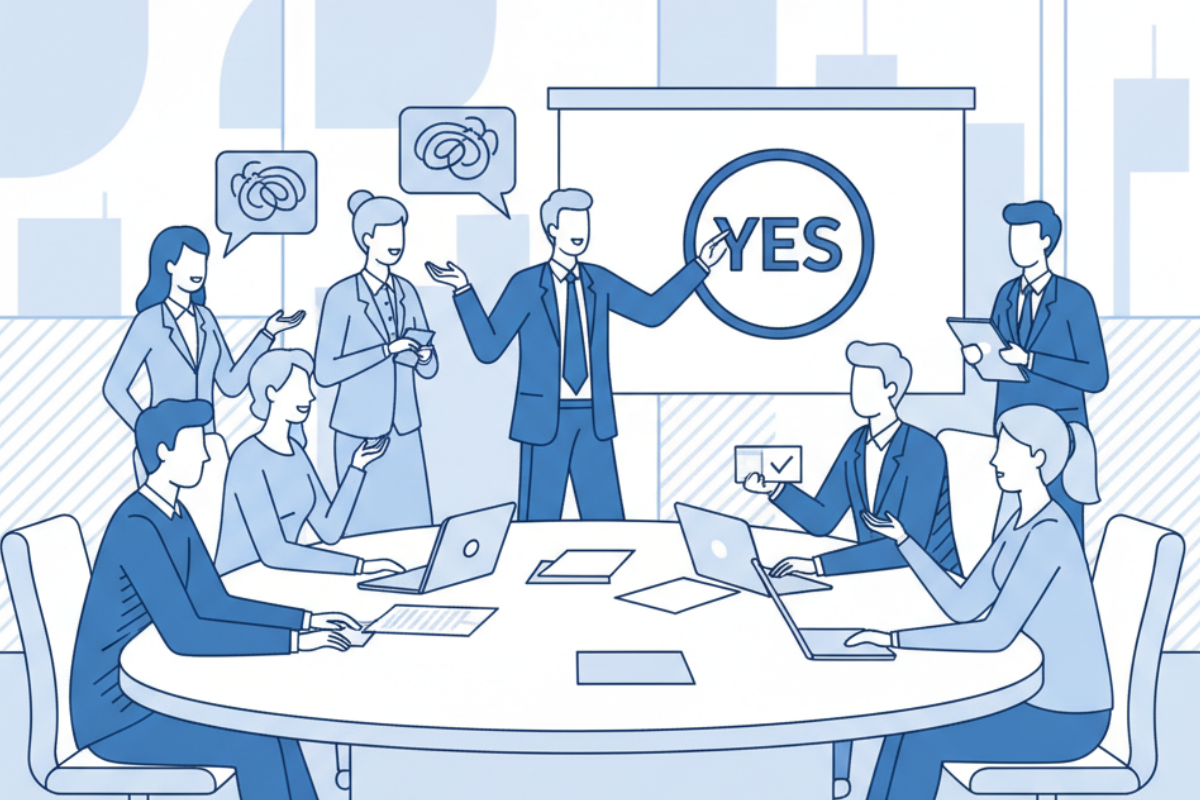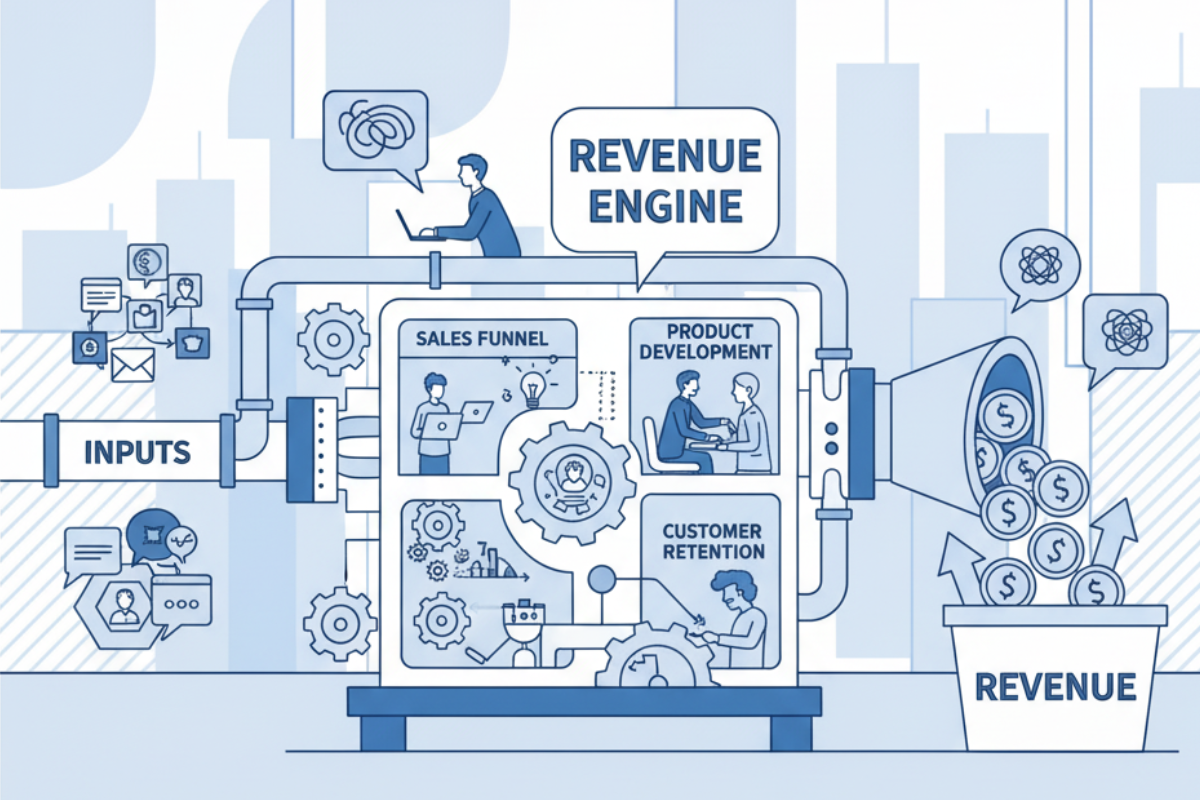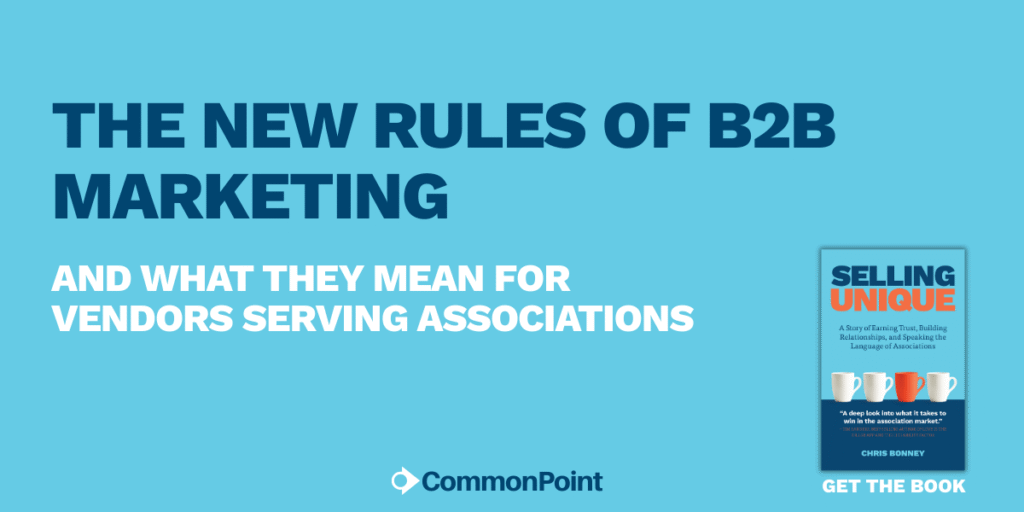It’s no secret that the B2B buying process has changed dramatically. But many vendors still market like it’s 2013.
If you’re a product or service provider trying to reach associations, it’s time to align your marketing with how buying actually happens now. And who’s involved.
Forrester’s 2024 B2B Marketing Strategy research lays out a clear reality: B2B buyers today don’t operate in a straight line, and they’re not just “decision-makers” anymore. They’re networks of influence. Communities of curiosity. Groups of cautious optimists trying to make the right call for their members, not just their bottom line.
Sound familiar?
That’s because associations are the ultimate consensus-driven buyers. Which means if you’re still selling to one executive or relying on a single “champion” to get you in the door, you’re missing the bigger picture.
This post breaks down the key shifts from the Forrester report—and how vendors who serve associations can use these insights to sharpen their strategy, elevate their presence, and close more meaningful deals.

1. The Era of “Buying Groups” is Here. Associations Have Been Living It for Decades.
According to Forrester, on average, 13 people within an organization are involved in the buying decision—not lone decision-makers. These groups are made up of multiple roles, job functions, and experience levels. And here’s the kicker: they’re often gathering information and forming opinions long before you even know they’re interested.
For association vendors, this isn’t new. Boards. Committees. Department heads. Volunteer leaders. The decision-making process is collaborative by nature.
What you need to do:
- Stop writing content for the “C-suite” only. Speak to all the players: IT staff, program managers, marketing leads, member services. Everyone plays a role in shaping opinions.
- Map your messaging to job functions and use cases. How does your solution help a program manager vs. a data analyst? Your website and sales collateral should make that clear.
- Create content that helps internal champions make the case. One-pagers. Comparison sheets. Cost-benefit guides. Your champion needs tools to rally others, not just a PDF deck from your last demo.
Here’s a quick video that illustrates how B2B buying groups operate today and why associations are consensus-driven:
2. Buying Signals Are Digital, Early, and Often Invisible.
One of the most critical shifts in Forrester’s report: buyers now spend 70% or more of the journey gathering information independently before contacting a vendor.
In the association world, that means they’re browsing your site, clicking your LinkedIn posts, skimming reviews, checking who you’ve worked with—and forming an opinion well before your first email or call.
What you need to do:
- Treat your website like your best salesperson. Is it written for humans, not just search engines? Can someone land on your homepage and understand—clearly—what you do and who it’s for?
- Optimize for the “research phase.” Most association vendors don’t show up until the RFP. Smart ones show up before that, with helpful, honest, low-pressure content that earns trust early.
- Share content on the channels where buyers actually are. LinkedIn. Google. Peer networks. If you’re only visible after someone downloads a whitepaper, you’re too late.
3. The Most Powerful Marketing Strategy? Orchestration.
Forrester highlights “orchestration” as a core capability for modern B2B marketing—coordinating the right message, at the right time, across the right channels, in a way that serves the buyer’s journey.
In other words: no more random emails, generic case studies, or siloed campaigns. Everything needs to work together.
For vendors serving associations, orchestration looks like:
- A lead sees your thought-leadership post on LinkedIn.
- That post links to a checklist on your site: “Is your tech stack ready for 2026?”
- They download it. You follow up with a webinar invite tailored to their job title.
- After the webinar, they get a short series of helpful emails based on what they viewed.
- If they book a demo, your sales team already knows which pain points matter most.
This isn’t theoretical. It’s just strategic planning, buyer empathy, and some basic automation.
And yes—if you’re not sure how to pull it off, it’s exactly what we help with at CommonPoint.
4. Thought Leadership Is Now Table Stakes
Buyers don’t just want to know what you do. They want to know what you believe.
One of the clearest findings in the Forrester report: B2B buyers are attracted to companies that take a stand, share insights, and help buyers understand what’s next. They’re looking for strategic partners, not just vendors.
For vendors working with associations, this should be energizing.
Associations are mission-driven. They care about the future of their profession or industry. If your company can provide clarity, foresight, or even just better questions—it matters.
Here’s how to deliver meaningful thought leadership:
- Write the post everyone in your space is afraid to write.
- Take a stand on what “good” looks like in your niche.
- Share customer stories that show how your approach works in the real world.
- Interview experts your buyers trust—and build credibility by association.
Remember: good thought leadership is generous. It informs, it guides, and it builds authority without shouting.

5. Personalization Isn’t Optional
Generic messaging doesn’t work anymore. Forrester emphasizes the importance of personalization throughout the buying journey—by persona, stage, role, and even channel.
In your world, that might mean:
- A segmented email campaign tailored to association executives vs. IT managers.
- A demo deck that speaks to membership retention, not just system features.
- A website experience that helps first-time visitors self-identify their needs quickly.
Personalization isn’t about creepiness—it’s about clarity. It’s about showing you understand who your buyer is, what they care about, and how you can help.
If you don’t have the data to personalize yet, start with something better: assumption-based empathy.
What do most association decision-makers worry about right now? Staff burnout? System integrations? AI? Write to that. Start there.
6. Marketing Is Now a Revenue Engine—Not a Support Function
Perhaps the most profound message in Forrester’s report: B2B marketing leaders must act as co-owners of revenue, not just awareness.
For vendors serving associations, this means you can no longer afford for marketing to be a side hustle, an intern’s task, or something you “do when you have time.”
If your organization wants to grow in the association market, marketing needs to be:
- Consistent
- Strategic
- Tied to sales outcomes
- Measured and improved over time
This is not about flashy campaigns or vanity metrics. It’s about helping the right prospects find you, trust you, and say yes faster—because they already believe you’re the right fit.

Final Takeaway: This Isn’t a Pivot. It’s a Return to Relevance.
Everything Forrester describes—multi-touch journeys, trust-building, empathy-driven content—is what great marketers have always done.
If you’ve been selling to associations for years, chances are you’ve done this intuitively. You’ve built relationships. Shown up at conferences. Spent time understanding their world.
The opportunity now is to bring that same mindset to your digital marketing.
Your buyers are researching quietly, deciding slowly, and aligning collaboratively. Your marketing should reflect that.
———–
𝙒𝙝𝙚𝙣 𝙮𝙤𝙪’𝙧𝙚 𝙧𝙚𝙖𝙙𝙮 𝙩𝙤 𝙩𝙝𝙧𝙞𝙫𝙚 𝙞𝙣 𝙩𝙝𝙚 𝙖𝙨𝙨𝙤𝙘𝙞𝙖𝙩𝙞𝙤𝙣 𝙢𝙖𝙧𝙠𝙚𝙩:
📣 My marketing agency CommonPoint can tell your story to the right association buyers.
🎯 My workshops and coaching can get your sales team ready to win.
📘 Buy my book, Selling Unique, the blueprint to selling to associations the right way.


